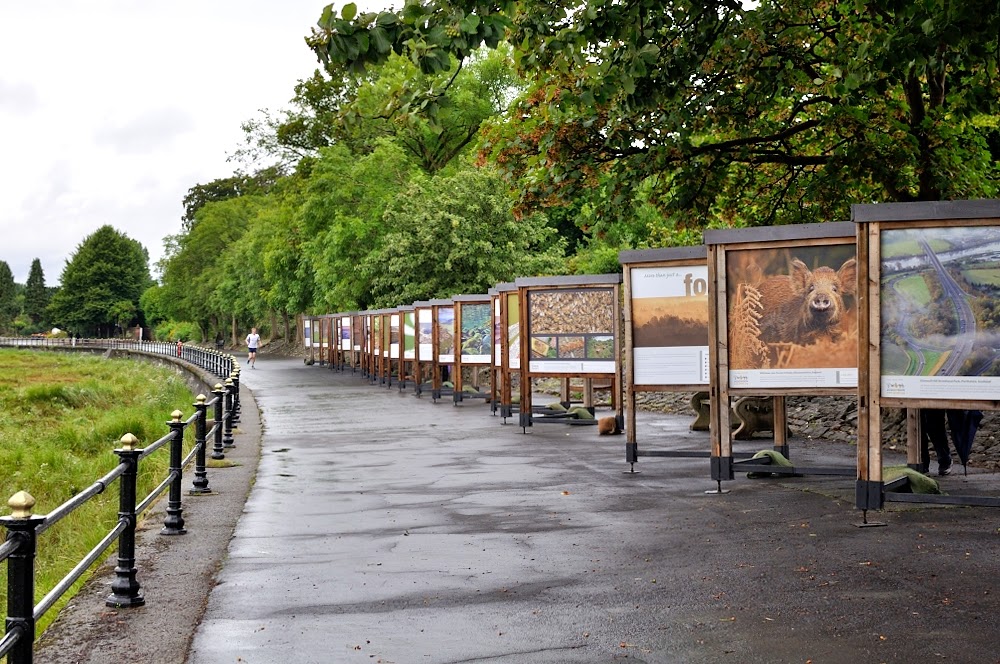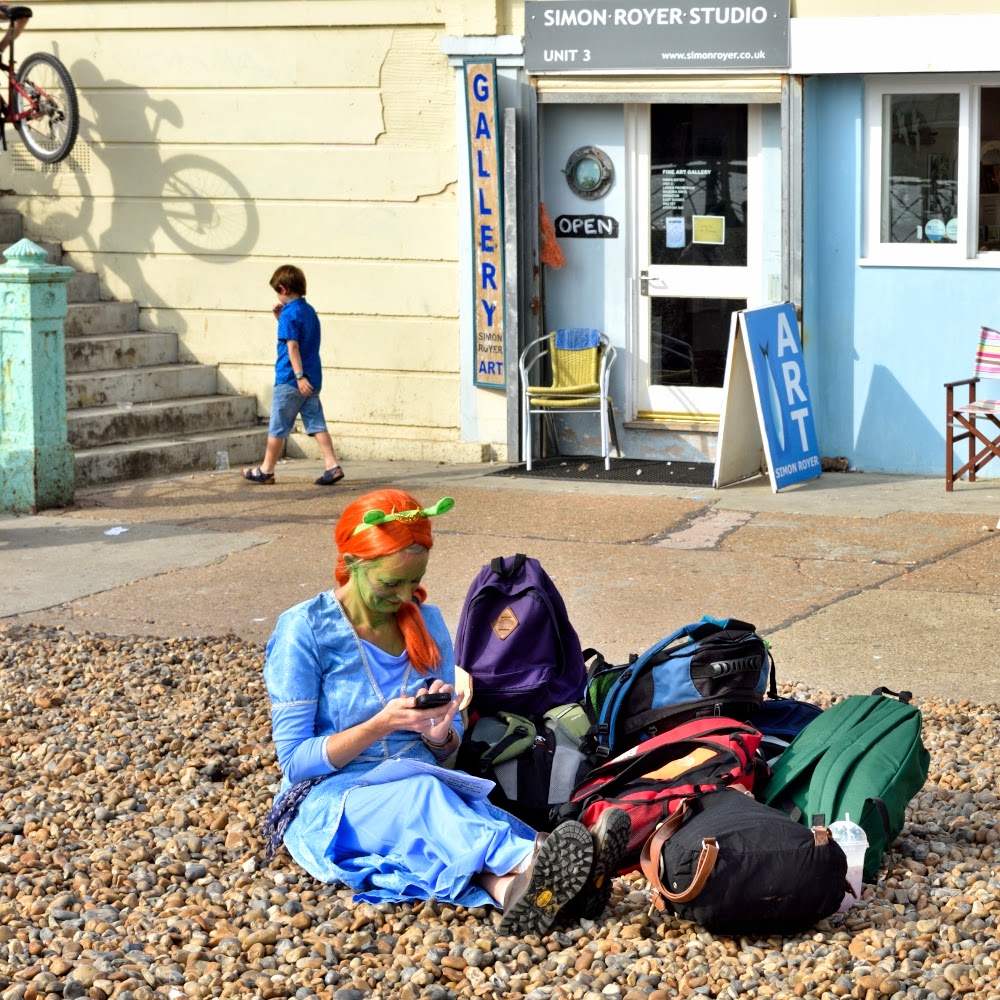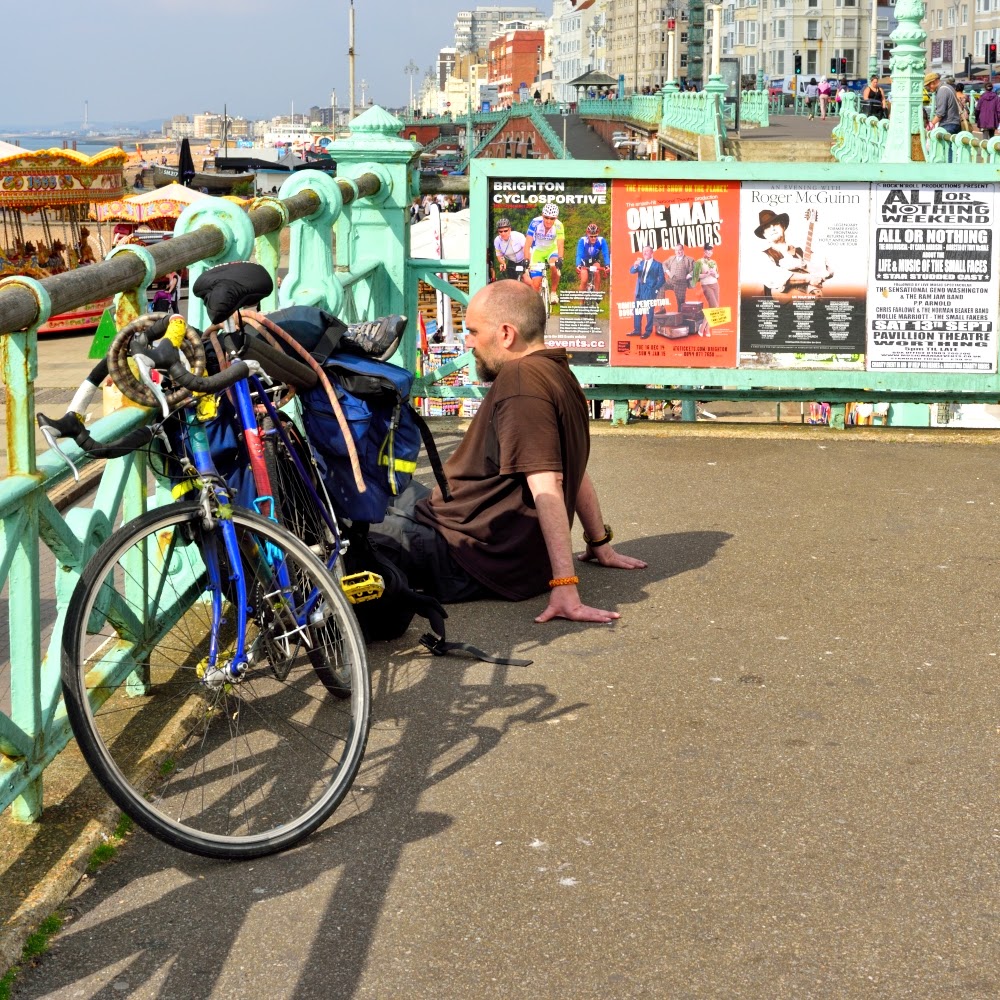- How does this work challenge the boundaries between documentary and art?
- What is the core of Seawright's argument and do you agree with him?
- If we define a piece of documentary photography as art, does this change its meaning?
- Documentary photography to me is as close as you can get to a record of reality. This interpretation is however already slightly ambiguous when you take on board the fact that the photographer is selecting a viewpoint; they are choosing what to include and what to exclude in the frame. So a documentary photograph is can only ever be one perspective of a situation. The boundary in this respect is therefore already blurred. In Imperial War Museums ("IWM") 2013, Seawright talks about the function of editorial images which have to convey their meaning almost immediately because of the speed at which they are looked at. Street photography is an excellent example of where the boundary between art and documentary is blurred; sure it's a record of reality, but that record is highly contrived by the photographer to give it (in some cases) an almost surreal, and certainly selective, viewpoint.
- Art photography in my view is everything else, plus it can also include documentary photography in certain contexts. It is photography where the meaning is slightly ambiguous, where the reader has to dig deeper to understand or derive meaning from the images, and possibly relate back to his or her own experiences in order for the image to say something to you. In IWM, 2013, Seawright makes the point that with art forms the construction of meaning is done by the person engaging with the art and not by the artist, and I think this is the core of his argument, and on this point I agree with him. If an image can evoke a reaction that will differ from person to person, i.e. a subjective response beyond the mere receipt of information, that to me is art.
For instance, taking the image from Saturday 9th June 1973 as an example, if you take away the text (and therefore context), this could simply be a lovely picture of a child playing on the swings, and therefore, art? But with the addition of the text, and also the viewpoint that implies the angle of view that a marksman might have if he/she were hiding waiting to take the shot, or they could also be from the victim's view where they fell or were left, pins the image to history and adds an editorial feel, and therefore, documentary?
In terms of how this work challenges the boundaries between documentary and art, I think there are two answers:
- It doesn't, because the boundaries are actually very blurred anyway, or
- It completely challenges the boundaries because provides a series of record shots or "traces of traces of events" (Campany, 2003) but taken from a subjective viewpoint forcing an emotive reaction by the inclusion of the text and meaning.
What is important though is that this piece of work has been created to serve as a memory; to echo the sentiments of Meyerowitz in Campany 2003 about Ground Zero: "I felt if there was no photographic record allowed, then it was history erased", or in Campany's view that documentary photography after the event (or late photography) is used figuratively in contemporary art: "It seems clear that contemporary art has a predilection for the ‘late photograph’. It has become a central trope in its current dialogue with documentary. The works of Willie Doherty, Paul Seawright, Sophie Ristelhueber and Richard Misrach are some of the more interesting examples" (Campany, 2013).
I can't find any evidence that defining documentary photography as art reduces its meaning (assuming the work is genuine and not contrived), in fact the opposite - I think it increases its meaning. For instance, Seawright's images are equally meaningful as art and I think possibly more evocative. We have become used to seeing graphic or shocking images, either in real life news bulletins or through CGI or film special effects. The lack of graphic or factual information in the Sectarian Murder series delivers a more conceptual impact rather than a journalistic impact, but the meaning is still there. In fact maybe more so.
To compare with one of Meyerowitz's Ground Zero images, Five More Found in Howarth et al, 2011, pp 130-131. To me, this is documentary, but it is also art (it has meaning, composition, form, colour contrast, light, drama) - but the fact that it can be considered art does not make the image have any less meaning; in fact quite the opposite, evoking a bitter/sweet response. In fact, I think in this case meaning is enhanced by the artistic nature of the image, for one thing it's so beautiful and striking you want to keep looking at it. My arguments with this image are that it is not street photography and it is therefore not clear on why it was included in Howarth et al, 2011, I see it as documentary produced in a very artistic way.
Another image with blurred boundaries, also related to the 9/11 attacks in New York in 2001 is one by Melanie Einzig seen at the Cartier Bresson: A Question of Colour Exhibition in 2012 (previously posted in TAOP), Einzig, 2001 in Positive View Foundation, 2013. The image in question shows a man walking down the road carrying a package with the airstrike happening behind him. This is documenatry, as it shows an event happening in a very matter-of-fact journalistic way, but it is also art - it's street photography - the random occurence of different events, the extraordinary amongst the ordinary, the oblivion by one subject of another, incongruence etc. But does that make it less shocking? Probably not. If anything more shocking as the inclusion of the context of the ordinary makes it look less like move CGI and more that it will have an impact on everyday people.
To conclude:
- boundaries between art and documentary are not rigid, they are blurred and overlapping
- an artistic approach to documentary, or the overlay of art onto a documentary topic can enhance the emotive response
- the meaning of art depends on the experiences and response of the viewer.
References
- Butet-Roch, L. (2014) Invisible War. British Journal of Photography 161 (7827), pp.62-65
- Campany, D. 2003 [available online] Safety in Numbness available from http://davidcampany.com/safety-in-numbness/ [accessed 25 August 2014]
- Einzig, M. 2001 September 11th, New York, in Positive View Foundation 2013 Cartier-Bresson: A Question of Colour Exhibition Catalogue, p202 [Einzig, M. (2001) [online image] available from http://www.thetimes.co.uk/tto/multimedia/archive/00354/116220147_354024j.jpg [accessed 25 August 2014]]
- Howarth, S. and McLaren, S. (2011) Street Photography Now, London
- Meyerowitz, J. 2003 in Campany, D. 2003 [available online] Safety in Numbness available from http://davidcampany.com/safety-in-numbness/ [accessed 25 August 2014]
- Imperial War Museums, 2013 [available online] Catalyst: Contemporary Art and War at IWM North available from http://vimeo.com/76940827 [accessed 25 August 2014]
- Seawright, P. (date unknown) [available online] Sectarian Murder available from http://www.paulseawright.com/sectarian/ [accessed 25 August 2014]


































































